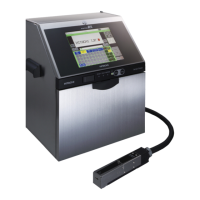●Transmission Sequences 5-28
5.3.7-4 Character codes
For character code designation, either ASCII codes or 2-byte codes are used.
(1) ASCII codes (when the number of communication bytes is 1)
User pattern character 00 01 02 03 04 05 06 07 08 09 10 11 12 13 14 15
ASCII D0 D1 D2 D3 D4 D5 D6 D7 D8 D9 DA DB DC DD DE DF
User pattern character 16 17 18 19 20 21 22 23 24 25 26 27 28 29 30 31
ASCII E0 E1 E2 E3 E4 E5 E6 E7 E8 E9 EA EB EC ED EE EF
User pattern character 32 33 34 35 36 37 38 39 40 41 42 43 44 45 46 47
ASCII F0 F1 F2 F3 F4 F5 F6 F7 F8 F9 FA FB FC FD FE FF
ASCII codes are in hexadecimal notation.
Applicable to cases where the number of user pattern characters does not exceed 48 (user pattern characters
00 through 47).
(2) 2-byte codes (when the number of communication bytes is 2)
User pattern character 00: F140 = high-order byte F1 + low-order byte 40
See “5.4.1 Code Tables”.
5.3.7-5 Supplement
(1) If the same character code is used to transmit two or more user pattern character data in a single message,
the last-transmitted data takes effect.
(2) When two or more user pattern characters having differing character sizes or character codes are
transmitted in a single message, no limitations are imposed on the order in which they are transmitted.
5.3.7-6 Example of user registration character transmission
(1) Example where number of communication bytes of communication environment
settings is "1 byte," character size is "5 x 5" and character code is "47."
02H 1FH 32H 31H FFH 07H 0AH 12H 0AH 07H 00H 00H 00H 03H
STXESC225x547--------ETX
Code 47
Header,
classification
Pattern data arrangement
[Transmission results]
Defines character size 5 x 5, character code 47 user pattern.

